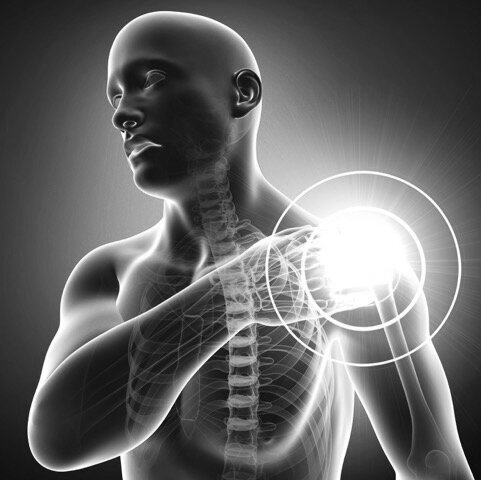Body Part Of The Month: The Neck
For the next blog post in our Body Part Of The Month series, our spinal specialist physio Paul tells us about the neck.
The Neck
The neck is comprised of 7 vertebrae. It plays a vital role in providing the immediate base for the head to sit on and the origin point for many muscles of the neck and shoulder girdle. The vertebrae contain and protect the upper spinal cord and brain stem which can migrate down as far as the third vertebrae in certain movements. From an evolutionary perspective, good mobility is vital in the neck as a means of allowing wide range visualisation to spot danger. This mobility is maintained by good alignment of the various joints within the neck which, between the 7 vertebrae, vary considerably.
The joint between the base of the skull and the top vertebrae (atlanto-occipital joint) is shaped similar to the joint in the knee so allows hinge movements - this joint is where a large percentage of nodding (flexion and extension) occurs. The joints between the 1st and 2nd vertebrae (atlanto-axial joint) are much flatter and sloped slightly down which allows for the majority of rotation in the neck (up to 60% of neck rotation occurs at this joint alone).
There are lots of muscles that attach around the lower part of the skull and upper neck joints that when working well allow smooth movement - if they become overloaded or overstretched, this is when movement can become limited and this can have an impact upon the rest of the neck and lower down the spine. The other 5 vertebrae link with progressively steep joint angles as the cervical spine transitions towards the thoracic spine.
When your neck works well
The neck works best when weight is evenly distributed through each of the cervical vertebrae. There should be a mild front to back curve in the cervical spine (lordosis) which is concave to the rear. The head should sit squarely on the top of the neck. To allow this to happen there needs to be good support from the lower back and thoracic spine as the head is essentially balanced on top of a long stick comprised of lots of small parts stacked up vertically. Changing the position of some of the lower vertebrae means the head needs to change position to balance you properly - to test this, sit upright on a chair. Then slowly allow your lower back to bend and your pelvis to rock back - feel the effect this has on your neck (it should feel like it's sliding forwards and poking out your chin).
When your neck doesn't work well
Neck pain can be easily distracted by pain in other areas - often the shoulder and arm. Broad, vague areas of pain in the shoulder or upper limb can be more to do with some stiffness in the neck rather than local shoulder pathology. Neck joint or muscle stiffness can contribute to referral into shoulder or upper arm pain and, of course, being where the majority of sensory nerves to the arm originate, neck issues can have wide ranging impact. As well as that, disc issues in the neck can impact basic function downstream such as gait and lower limb power although this is rare. Local muscular spasm and joint stiffness can be very painful and this pain can significantly limit range of movement in one direction - when addressed quickly this can be quickly resolved.
Common neck injuries
Most neck issues we see are fairly mild and tend to be related to postural changes with prolonged sitting. Often neck pains in a whiplash style can occur following a fall where the arm or shoulder breaks a fall but the head keeps going, placing strain on the muscles to the side of the spine. Occasionally there is little immediate neck pain in this scenario, but it tends to creep up over subsequent days. Local muscular spasm is fairly common, often when turning the neck in an awkward way - this can be worse when carrying or lifting a load.
Avoiding neck pain
The key to avoiding neck pain is maintaining a good range of movement (this will vary from person to person) and a good head on neck posture. Whilst the local muscle length is important, a lot of good neck posture starts around the lower back and abdominal muscles that offer a base of support through the thoracic spine to the neck itself. Once this area is improved, local neck management can become a lot more straightforward.
As always, if you have any persistent niggles, aches or pains in your neck or other places, don't soldier on in silence making them worse. Get in touch with us if you need us.
Words by our specialist spinal physiotherapist Paul Martin.




